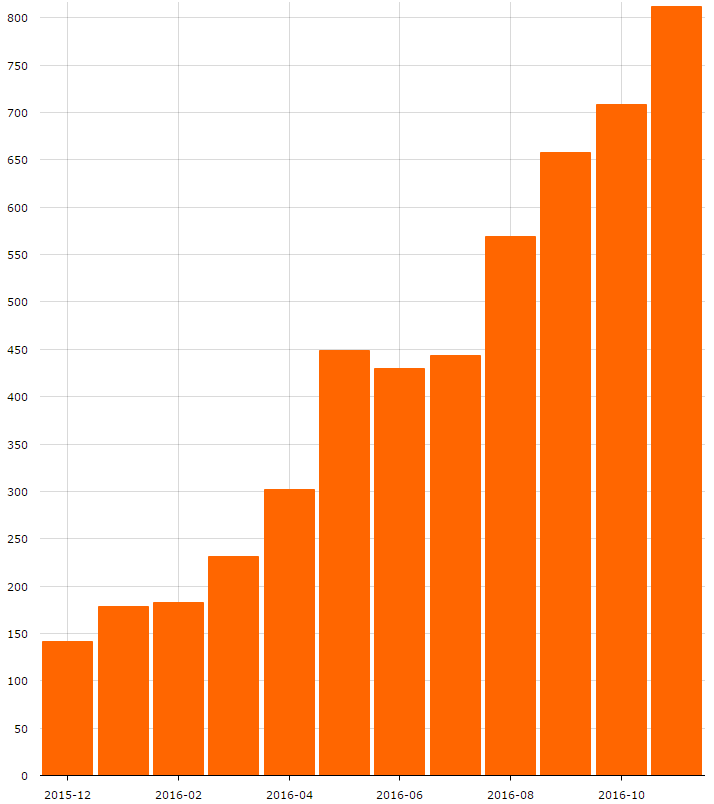The 2016 is just gone, and it was so rich on events for our team, that I decided to recap what happened during it and where it has taken us.
Obviously, the main and very challenging change was going open source in April. Now the platform is absolutely free and distributed under Apache 2.0, also there are no runtime restrictions on CUBA applications anymore. Our goal was to free up applications built with CUBA from any runtime license restrictions: we had concerns that the previous license was discouraging too many developers from trying the framework.
Very quickly this proved to be a very positive move. Even though the framework has become absolutely free, the sales of the Premium Add-ons and commercial version of CUBA Studio in April alone exceeded all sales for the previous year, giving us confidence and motivation to develop and professionally support the platform further. Today we have commercial clients in 33 countries, with Germany, USA and Russia in the lead.
Community growth is impressive as well. Our monitoring tool based on anonymous statistics - thanks to the users who keep this option on - showed over 800 active projects on CUBA Platform in December. This is six times year-on-year growth!
As a result, a handful of messages on the community forum in the beginning of the year has now turned into 20-30 each day. To support the growing community, we introduced regular webinars and trainings, and just a few days ago started Gitter for free chat on platform related topics.
Active CUBA Platform projects

Active projects monthly dynamics
On the technical side, steered by the community feedback, we focused on making the framework applicable to a wider range of real life use cases, making it more open, more extensible, more scalable. Let me list some of the most important implemented features:
The CUBA Studio migration tool. The tool generates data model over an existing database, and as a next step generates CRUD UI based on this model. Needless to say that this greatly simplifies legacy applications migration.
Jelastic integration. Now you can deploy CUBA application to the cloud in one click directly from Studio.
Embedding external UI components. Vaadin, GWT or arbitrary JavaScript UI components can be easily embedded in your application, and even added to the Studio’s pallette.
Multiple datastores. One the most wanted features - a CUBA application can now talk to multiple databases.
Application components. With application components, you can decompose a large application to a set of functional modules and develop them as separate projects. Each of such projects can be deployed separately or combined in a single application. It will likely have its own data model, UI and business logic - following the Self Contained Systems paradigm.
New REST API fully conforming to the REST architectural style: using URIs, HTTP verbs and OAuth2 authentication.
Apart of these, there were numerous improvements in platform releases 6.1, 6.2 and 6.3, and we start 2017 with release 6.4, bringing Polymer client support along with other features.
**
So - we are looking forward to another great year and I want to say thank you and wish a Happy New Year to all of our community members, whose support and feedback pushes us forward!**



